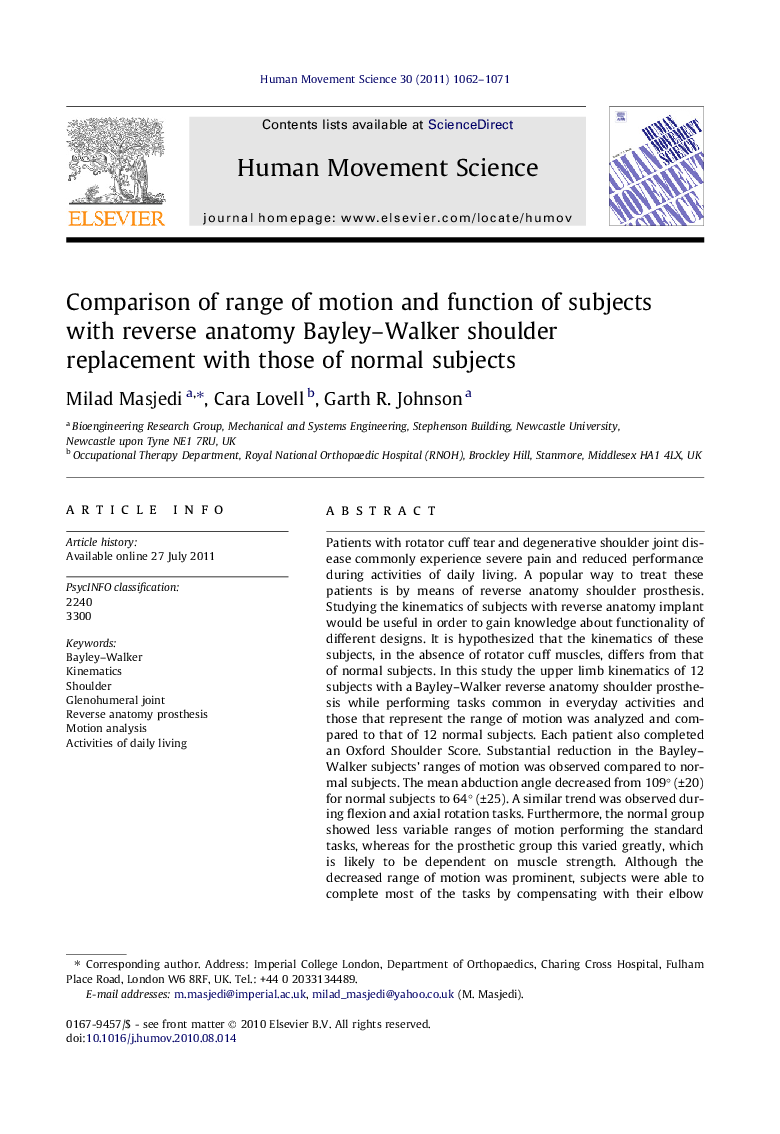| کد مقاله | کد نشریه | سال انتشار | مقاله انگلیسی | نسخه تمام متن |
|---|---|---|---|---|
| 928485 | 1474233 | 2011 | 10 صفحه PDF | دانلود رایگان |

Patients with rotator cuff tear and degenerative shoulder joint disease commonly experience severe pain and reduced performance during activities of daily living. A popular way to treat these patients is by means of reverse anatomy shoulder prosthesis. Studying the kinematics of subjects with reverse anatomy implant would be useful in order to gain knowledge about functionality of different designs. It is hypothesized that the kinematics of these subjects, in the absence of rotator cuff muscles, differs from that of normal subjects. In this study the upper limb kinematics of 12 subjects with a Bayley–Walker reverse anatomy shoulder prosthesis while performing tasks common in everyday activities and those that represent the range of motion was analyzed and compared to that of 12 normal subjects. Each patient also completed an Oxford Shoulder Score. Substantial reduction in the Bayley–Walker subjects’ ranges of motion was observed compared to normal subjects. The mean abduction angle decreased from 109° (±20) for normal subjects to 64° (±25). A similar trend was observed during flexion and axial rotation tasks. Furthermore, the normal group showed less variable ranges of motion performing the standard tasks, whereas for the prosthetic group this varied greatly, which is likely to be dependent on muscle strength. Although the decreased range of motion was prominent, subjects were able to complete most of the tasks by compensating with their elbow and trunk. The most challenging task for Bayley–Walker subjects was lifting an object to head height.
Journal: Human Movement Science - Volume 30, Issue 6, December 2011, Pages 1062–1071